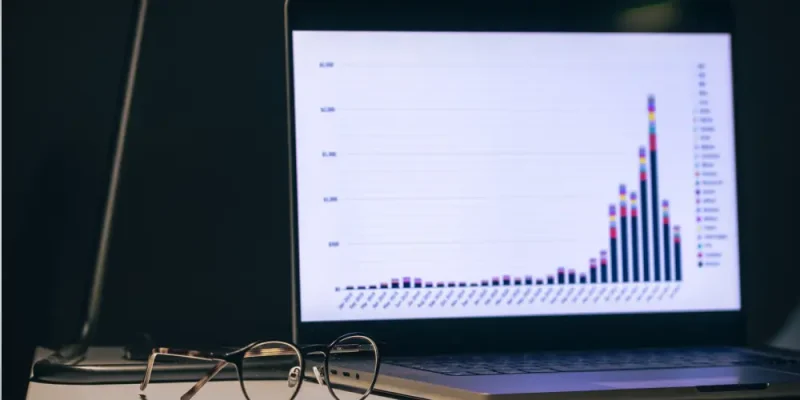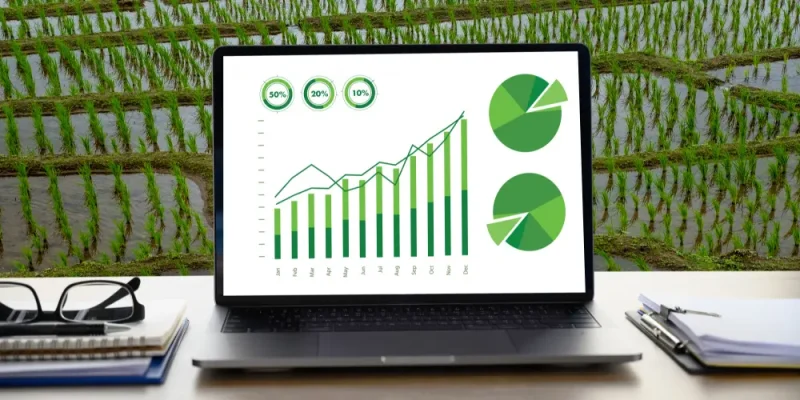Table of Contents
ToggleConversion rate optimization is a savvy marketing approach—not an exaggerated claim. It is a systematic process of engaging prospective customers to take the desired action on your website. E-commerce conversion rate optimization tools help identify areas for improvement and boost conversions.
Omatic Growth provides comprehensive support to benefit organizations, cultivate opportunities and gain a competitive edge. Unlock your website’s full potential and improve conversions with proven CRO strategies fully explained in the content below.
What is Conversion Rate Optimization (CRO)?
Have you done everything to boost conversions for your online storefront? Have you set and reset goals and implemented multiple policies, yet still failed? But why? This brings us to the intriguing concept of understanding how CRO works and the importance of considering conversion rate optimization services.
Let’s dive deeper into CRO to unlock its true rewards and upgrade your website’s performance.
The Basics of CRO: An Overview:
Look at the mathematical expression of conversion rate optimization below. What does it explain? It describes the significance of two actions required to complete the desired action on your website. When your website succeeds in grabbing organic traffic, the next aim is turning them into buyers.
CR % = (# of visitors who convert) / (Total # of visitors) x 10
CRO measures the percentage of users who complete the checkout process on a website, which is also referred to as conversions. Performing the “desired action” may include filling out a form or clicking the “add to cart” button.
A higher CRO percentage indicates that the business is performing well compared to industry benchmarks. On the flip side, a lower CRO percentage suggests that your website needs to improve its performance through website optimization services.

Suggested Read: How Shopify for Small Business Drives Online Selling in 2025
Key Metrics to Measure Conversion Rate Optimization:
Conversion rate optimization is crucial in designing marketing and sales strategies. Additionally, CRO metrics are significant analytical data points that work synergistically across sales channels to improve a website’s performance. The ultimate goal of every online business is to turn a visitor into a buyer.
CRO metrics focus on optimizing a website’s performance for existing customers, with the cherry on top being attracting new visitors. Encouraging current customers to make repeat purchases and turning new visitors into shoppers is the essence of CRO.
CRO metrics help businesses design data-driven strategies to make more informed decisions. Online businesses need KPIs (Key performance indicators) to identify pain points that might compromise their website’s performance.
Key CRO Metrics
Conversion Rate | The percentage of users who complete the desired action |
Bounce Rate | The percentage of visitors who leave the site without completing the checkout process |
Average Time on Page | It indicates how long the visitor stays on the web page |
Pages Per Session | The number of pages a visitor views during one session |
Exit Page Rate | The percentage of visitors who leave the site on a specific page |
Funnel Conversion Rate | The rate provides insights into how well a visitor moves through the conversion funnel. |
Average Order Value (AOV) | It reflects the average amount a customer spends during a single purchase |
Cart Abandonment Rate | The percentage of users who add products to their cart but leave without completing the checkout process |
Click-Through Rate (CTR) | It indicates how often people click on the link or CTA |
Customer Acquisition Cost (CAC) | It explains the average cost of acquiring a new customer |
Traffic Source | It identifies the traffic source from which the users arrive |
Cost Per Conversion | It reflects the cost spent for each conversion |
Page Load Time | It explains how much time it takes to load your website page. This is an extremely crucial metric to measure and enhance user experience and search engine visibility. |
Customer Lifetime Value (CLV) | The prediction of the profit associated with the visitor throughout their customer lifetime |
What is the Significance of Tracking CRO Metrics?
CRO metrics interpretation brings tangible improvement to business operations and extends the brand’s reach in search engines. Fortunately, each benefit paves the path for another benefit to follow. So, you need to take one wise and smart step to kick off a successful expedition.
Here is a quick view of the benefits businesses experience while tracking CRO metrics.
- Improved user experience
- Drives conversions
- Lowers bounce rate
- Optimizes marketing budget
- Maximizes revenue
- Provides valuable insights into customer behaviour
- Offers a competitive edge across industry benchmarks
- Helps marketing analysts work smarter
Optimize Your Store with Comprehensive E-commerce Marketing & Shopify SEO Strategies
How Conversion Rate Optimization Works
Conversion rate optimization is a unified practice to increase the percentage of users who do not leave the site without completing the desired action. This action could be signing up for a newsletter or completing the checkout process. CRO also works to implement data-driven approaches for a smooth conversion funnel and to drive conversions. Policymakers thus opt for conversion rate optimization tips for smooth business operations.
Business Impact Testing: B2B conversion rate optimization:
B2B is the big picture of the CRO process and multivariate testing is a part of conversion rate optimization tools incorporated into business impact testing.
Let’s walk through a step-by-step guide to how CRO actually works for an organization:
Step 1: Identify Goals:
In the first phase, you should be very clear about your objectives. These could include:
- Enhancing customer engagement
- Lowering the bounce rate
- Increasing sign-ups
- Driving sales
Step 2: Analyze Current Performance:
The second step is crucial as it involves evaluating the performance level of your website. Analytical tools help businesses identify issues such as underperforming pages or bottlenecks. CRO metrics, including bounce rates, click-through rates and conversion rates help identify areas for improvement in website optimization.
Step 3: Collect Data:
This is the time to collect quantitative and qualitative data using sources like:
- Session recordings
- Heatmaps
- User surveys
The findings will help design strategies to understand customer behavior on your site, along with their preferences and pain points. The information obtained identifies areas for improvement and provides a way to understand your audience better. This can help enhance customer engagement.
Step 4: Hypothesize Solutions:
Developing a hypothesis based on the data collected can help address the challenges businesses face at every level. Your hypothesis to resolve an underlying issue could include:
- Enhancing mobile responsiveness
- Simplifying forms
- Placement of CTAs
- Improving website load time
Step 5: Test Changes:
Implementing multivariate tests or using a methodology like A/B testing to compare findings can demonstrate the effectiveness of changes. Testing helps us understand various issues and ways to resolve them, enabling more informed and competitively smart business decisions.
Step 6: Analyze Results:
Now, it is the time to see the impact of the changes made, along with their statistical significance. Using a statistical approach helps identify winning variations that align with your business objectives and capture leads.
Step 7: Optimize Continuously
Businesses need to keep evolving with modern trends and standards to stay ahead in the industry. CRO (Conversion Rate Optimization) follows the same notion, involving constant practices of identifying problems, finding solutions and implementing changes. Targeting and retargeting strategies based on product reviews and user feedback, aligned with industry dynamics, ensure CRO success.

The Role of Data in CRO Effectiveness
The data collection process and the sources used are crucial to CRO optimization. The CRO process becomes dubious and misleading if the data is unreliable and irrelevant. Only quantifiable data can help to understand the behavior of website visitors. The process follows as:
- Collection of data
- Analyzing data
- Pinpointing pain points
- Implementing changes
This process can improve the likelihood of visitors turning into buyers on your website and this is the crux of CRO (Conversion Rate Optimization).
Collecting and Analyzing User Behavior Data:
Users landing on your website is a critical aspect of the CRO process. Businesses need to conduct data analysis to interpret their visitor’s movements on the website. Analyzing user behavior helps understand their:
- Pain points
- Preferences
The information obtained helps businesses gain valuable insights to optimize their website and enhance customer engagement. Data analysis also identifies issues related to visitor’s page-leaving time and helps find reasons why visitors leave the website after visiting a particular page. Furthermore, session recordings and heatmaps also describe users’ behavior in the conversion funnel. Data analysis paves the way for website optimization by fixing issues and implementing changes to achieve online goals.
Split Decision Testing: A/B Testing and Multivariate Testing
- A/B testing refers to splitting a website into two versions and then analyzing user behavior on each version. It helps determine which version is more effective in boosting versions.
- Heat maps are a visual summary of where users click, scroll or hover on the website. The information is used to remove user confusion and simplify their journey.
- User feedback is another important source of information about website visitors.
Analytics tools explain everything about your website traffic such as:
- The number of visitors
- Where do they come from
- What actions did they take
Session recordings show how users interact across website pages in real time. The findings help website designers redesign the web pages, ensuring effortless navigation.
Strategies to Improve CRO Effectiveness
Businesses can achieve CRO (Conversion Rate Optimization) success by implementing an impactful CRO strategy across significantly important areas of the website.
Here are some of the most important areas to implement a conversion rate optimization strategy:
Enhancing Landing Page Design:
When visitors reach your website, they navigate through various pages in search of relevant information. That’s why landing page design is crucial in converting visitors into buyers.
Hassle-free navigation increases the chances of users completing the desired action, which impacts the CRO strategy.
Here are a few smart ways to enhance your landing pages:
- A straightforward and relevant heading with a clear message
- Visually appealing design with clean aesthetics
- Mobile responsiveness
- SEO-optimized, engaging content
- Add social proof
Improving Website Load Speed
Website loading time directly impacts CRO (Conversion Rate Optimization). Customers leave the website quickly if it takes too long to load. This lowers the conversion rate by increasing the bounce rate and decreasing the likelihood of visitors returning to the website.
Here are some popular practices to improve website load speed:
- Optimize images
- Choose a fast web hosting service
- Distribute the content across multiple servers
Optimizing Call-to-Actions (CTAs)
Optimizing CTAs is a primary driver of conversion rate optimization strategy. You can engage the audience and capture leads by making the CTAs:
- Clear
- Visible
- Compelling

Measuring the Success of CRO Efforts
Real-World Examples of CRO in Action:
| Real World Examples | CRO Strategy |
| Amazon |
|
| Airbnb |
|
| Dropbox |
|
| Booking.com |
|
Lessons Learned from Unsuccessful CRO Efforts:
Failed CRO efforts stem from multiple factors. A data-driven approach is essential to boost conversions and ineffective CRO processes can lead to wasted time, money and resources.
Here are the key lessons from unsuccessful CRO efforts:
- Unreliable and irrelevant data
- Neglecting user behavior
- Skipping A/B testing
- Ignoring mobile responsiveness
- Unoptimized landing pages
- Slow loading speed
- Ambiguous CTAs
The Future of Conversion Rate Optimization
AI is shaping the future of conversion rate optimization by bringing invaluable efficiency. By Investing less money, time and resources, marketers can design pages that align better with audience expectations.
The Role of AI and Predictive Analytics in CRO:
AI enhances CRO strategies by bringing efficiency and precision. From creating engaging copy to automating A/B teasing, every step becomes more precise and functional. Predictive analysis software is an AI-driven tool that accurately predicts user behavior, giving incredible advantage to landing pages. It enables marketers to use compelling CTAs and highlight better placements on web pages.
With predictive analytics, conversion maximization becomes intuitive. Testing and layout optimization have never been so quick and accurate. AI is making conversion rate optimization proactive by sensing marketing fluctuations and predicting user behavior.
Emerging Trends Shaping CRO Strategies:
Improving customer’s online experiences directly impacts conversion rate optimization. Marketers research and discover modern trends to influence CRO strategies.
Here are some popular CRO trends in 2025:
- AI-based personalization tools
- Adding chatbots to websites
- Activating ABM (account-based marketing) strategy
- Integrating user-generated content
- Improved retargeting email strategies
- Adding video messages to websites
Conclusion
Conversion rate optimization (CRO) is a practical tool for enhancing a website’s performance and building a lead pipeline. Omatic Growth provides valuable insights into understanding the effectiveness of CRO. Additionally, CRO streamlines business operations and maximizes revenue by improving user experience and reducing the bounce rate. It also helps increase return on investment (ROI) and optimize productivity.
Get Your CRO Audit Today for Comprehensive Website Optimization
Frequently Asked Questions (FAQs)
What are the pillars of conversion rate optimization?
There are six primary pillars of conversion rate optimization, along with several secondary CRO practices. Here they are:
- User Experience (UX)
- Engaging Content
- Straightforward CTAs with vivid placement
- Mobile Responsiveness
- Continuous Testing
What is the KPI for conversion rate?
Conversion rate is a KPI that measures an organization’s performance by calculating the percentage of total conversions (desired actions completed, such as purchases) divided by the total number of visitors to the site.
How does conversion rate optimization work?
Conversion rate optimization (CRO) is a continuous process that helps businesses improve conversions for substantial growth. It refers to the percentage of users who complete a desired action, such as clicking the “add to cart” button. CRO focuses on enhancing user experience and improving a website’s visibility in search engines.
What is the conversion rate optimization theory?
The theory of conversion rate optimization describes how an organization improves conversions by implementing CRO techniques such as better UX, A/B testing and clear CTAs. It also explains how grabbing organic traffic boosts conversions.
Optimized CR = (improved conversions / more quality visitors) x 100
What is the conversion rate rule?
The conversion rate rule implies:
- Focus on the conversion funnel
- Simplify the checkout process by making it intuitive
- Use analytics to make informed decisions
- Align communication with your audience’s intent
- Continuous testing

At Omatic Growth, we are Shopify experts dedicated to crafting high-performing eCommerce solutions. Our team specializes in Shopify development, custom app integration, store optimization and data-driven strategies that enhance performance and maximize conversions. With expertise in Shopify analytics and technical support, we help brands navigate complex challenges and stay competitive in an evolving digital landscape. Through insightful content, we guide businesses in leveraging Shopify’s full capabilities for long-term success.



